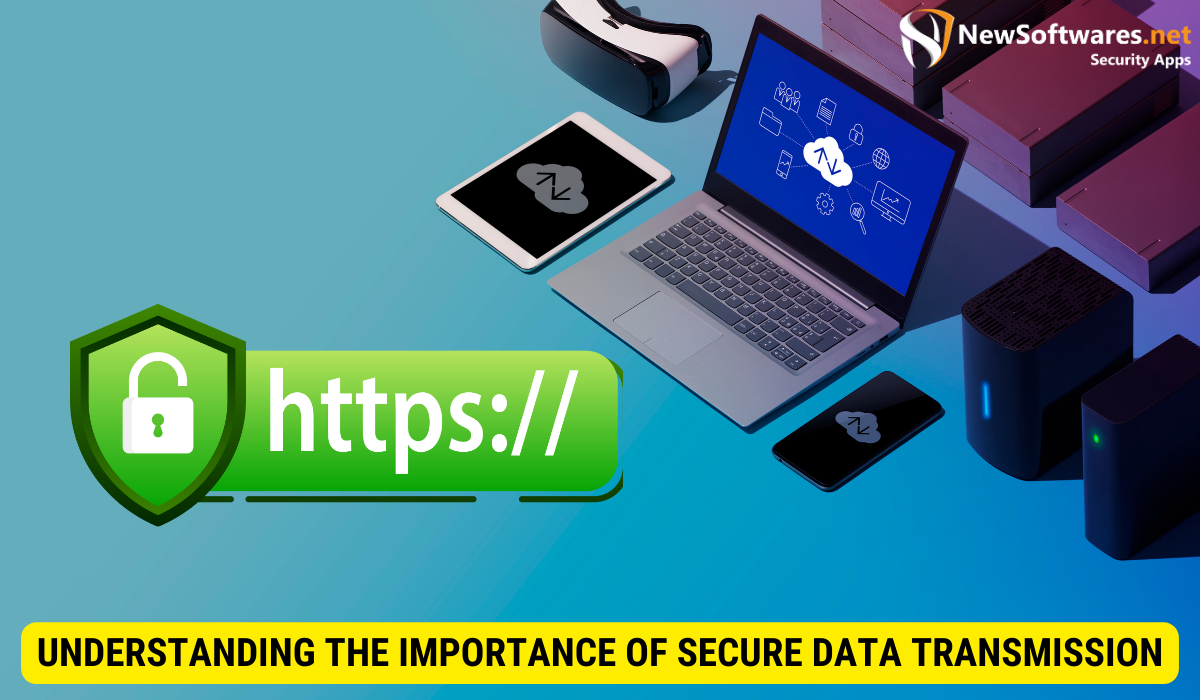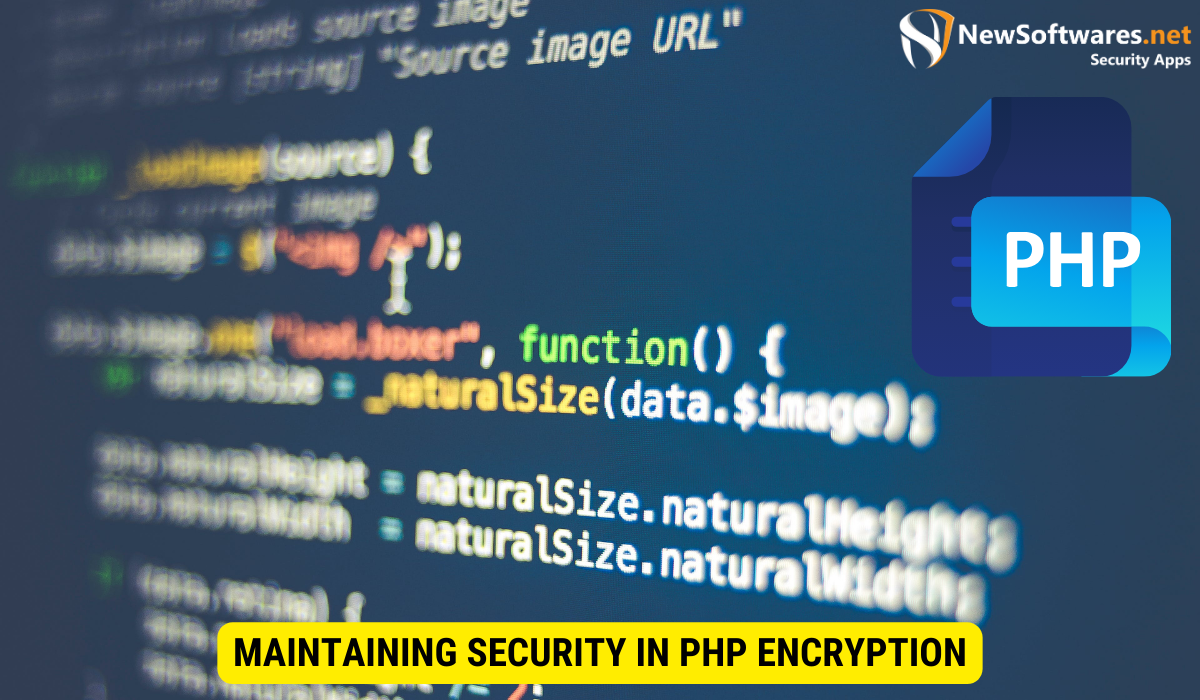To securely send form data to email using PHP encryption, follow these steps:
1) Prepare the form data by sanitizing inputs and validating data.
2) Implement PHP encryption by choosing an encryption algorithm, generating encryption keys, encrypting the data, and sending the encrypted data along with decryption information.
By following these steps and adopting best practices, you can ensure the secure transmission of form data.
Data security is of supreme significance in today’s digital age. With the increasing number of cyber threats, it is crucial to ensure that sensitive information, such as form data, is transmitted securely. One effective way to achieve this is by utilizing PHP encryption. Together, we will explore the importance of secure data transmission, the basics of PHP encryption, steps to send form data securely, troubleshooting common issues, and maintaining security in PHP encryption.
Understanding the Importance of Secure Data Transmission

Transmitting data securely is vital to protect sensitive information from unauthorized access or manipulation. When data is sent via unsecured channels, it becomes vulnerable to interception by malicious entities. This can lead to the exposure of personal data, financial information, or even confidential business details. Therefore, implementing secure data transmission measures is essential to safeguard both individuals and organizations.
In today’s digital age, where data breaches & cyberattacks are becoming increasingly common, it is crucial to understand the importance of secure data transmission. Whether it is transmitting personal information during online transactions or sharing confidential documents within a corporate network, the need for secure data transmission cannot be overstated.
The Role of PHP in Secure Data Transmission
PHP, a server-side scripting language, plays a significant role in ensuring secure data transmission. It provides various encryption functions and algorithms that can be used to secure data before sending it over the network. PHP encryption enables the transformation of plaintext information into ciphertext, which is unreadable without the appropriate decryption key. This adds an added layer of security to the transmitted data.
One of the most commonly used encryption functions in PHP is the Advanced Encryption Standard (AES). AES is a symmetric encryption algorithm that use a secret key to encode and decrypt data. By implementing AES encryption in PHP, sensitive data can be securely transmitted, ensuring that it remains confidential and protected from unauthorized access.
In addition to encryption, PHP also offers other security features, for instance secure socket layers (SSL) and transport layer security (TLS). These protocols provide secure communication channels between the client and the server, ensuring that data is transmitted in an encrypted and tamper-proof manner. By utilizing these features, PHP enables developers to build robust and secure web applications that protect sensitive data from potential threats.
Risks of Unsecured Data Transmission
When data is transmitted without adequate protection, it is exposed to several risks. One such risk is eavesdropping, where attackers can intercept and read the data in transit. This can be particularly concerning when transmitting sensitive information, for instance credit card details, social security numbers, or personal health records. By eavesdropping on unsecured data transmission, attackers can get access to this sensitive information and potentially use it for malicious purposes.
Additionally, data can be modified or tampered with during unsecured transmission. This poses a significant risk, especially in scenarios where data integrity is crucial. For example, in financial transactions, any unauthorized modification of data can result in financial loss or fraudulent activities. By implementing secure data transmission measures, organizations can make certain the integrity of their data and prevent unauthorized modifications or tampering.
Another risk of unsecured data transmission is data theft. Attackers can exploit vulnerabilities in the transmission process to steal sensitive information without the knowledge or consent of the data owner. This can have severe consequences, ranging from identity theft to financial fraud. By prioritizing secure data transmission, individuals and organizations can mitigate the risk of data theft and protect their valuable information.
In conclusion, understanding the importance of secure data transmission is crucial in today’s digital landscape. By implementing robust security measures, such as encryption and secure communication protocols, PHP plays a vital role in ensuring the secrecy, integrity, and availability of transmitted data. Protecting sensitive information from unauthorized access, eavesdropping, data manipulation, and theft is essential for individuals and organizations alike. Therefore, it is imperative to prioritize secure data transmission to safeguard our digital lives and maintain trust in the online world.
Basics of PHP Encryption
PHP encryption involves the process of converting plaintext data into ciphertext using cryptographic algorithms. Understanding the basics of PHP encryption is crucial for developing secure data transmission systems. Let’s explore some key concepts:
What is PHP Encryption?
PHP encryption refers to the process of encrypting data using encryption algorithms supported by PHP. Encryption algorithms, like Advanced Encryption Standard or RSA Rivest-Shamir-Adleman, ensure the confidentiality and integrity of the data. Encryption transforms the original data into an incomprehensible format, requiring a decryption key or password to convert it back to its original form.
Key Components of PHP Encryption
The key components of PHP encryption include:
- Encryption Algorithms: PHP supports various encryption algorithms, such as AES, RSA, and Blowfish. These algorithms determine the encryption and decryption processes.
- Encryption Keys: Encryption keys are use to encode & decrypt data. They can be symmetric (same key for encryption and decryption) or asymmetric (different keys for encryption and decryption).
- Cipher Modes: Cipher modes determine how encryption and decryption are applied to blocks of data. Common modes include ECB (Electronic Codebook), CBC (Cipher Block Chaining), and CTR (Counter).
- Initialization Vectors (IV): IVs are random values used in conjunction with the encryption algorithm to make sure unique encrypted outputs even when the same plaintext is encrypted multiple times.
Steps to Send Form Data to Email Securely
Now, that we know the significance of secure data transmission and the basics of PHP encryption, let’s explore the steps to securely send form data to email:
Preparing Your Form Data for Transmission
The first step is to prepare the form data for transmission:
- Sanitize Inputs: Remove any potentially dangerous characters or code from the form data to prevent injection attacks.
- Validate Data: Ensure that the form data is valid and meets the required criteria (e.g., email addresses are properly formatted).
Implementing PHP Encryption
Next, implement PHP encryption to secure the form data before sending it to the recipient’s email:
- Choose Encryption Algorithm: Select a suitable encryption algorithm, such as AES or RSA, based on your specific requirements.
- Generate Encryption Keys: Generate encryption keys securely and store them in a secure location.
- Encrypt Form Data: Use the chosen encryption algorithm and keys to encrypt the form data before transmission.
- Send Encrypted Data: Send the encrypted form data along with any necessary decryption information to the designated email address.
Troubleshooting Common Issues in PHP Encryption
While implementing PHP encryption, you may encounter some common issues. Let’s explore a few:
Identifying Common Errors
Some common errors in PHP encryption include:
- Incorrect Encryption Algorithm Selection
- Inadequate Key Generation or Management
- Improper Encryption Configuration or Initialization
Solutions for Common Encryption Issues
To overcome these issues and ensure secure data transmission, consider these solutions:
- Thoroughly research encryption algorithms and choose the one that best suits your specific requirements.
- Implement proper encryption key generation and management practices, including secure storage and rotation.
- Validate encryption configurations and ensure correct initialization, including the use of appropriate cipher modes and IVs.
Maintaining Security in PHP Encryption
Maintaining security in PHP encryption involves adopting best practices and taking necessary precautions to mitigate potential risks. Here are a few key points:
Regular Updates and Security Patches
Stay updated with the latest releases and security patches for PHP and encryption libraries. Regularly updating your software helps address known vulnerabilities and makes sure that you have the latest security enhancements.
Best Practices for Secure PHP Encryption
Follow these best practices to improve the safety of your PHP encryption implementation:
- Use Strong Encryption Algorithms: Choose encryption algorithms that are considered secure and widely accepted.
- Employ Key Management Best Practices: Implement secure key generation, storage, and rotation practices to prevent unauthorized access to encryption keys.
- Implement Secure Data Transmission Channels: Utilize secure protocols, such as HTTPS, when transmitting encrypted data over networks.
- Implement User Authentication and Authorization: Ensure that only authorized individuals have access to the decrypted data.
- Regularly Audit and Monitor: Perform regular audits of your PHP encryption implementation to identify any potential vulnerabilities or weaknesses. Monitor logs and system activities for suspicious behavior.
Key Takeaways
- Secure data transmission is essential to protect sensitive information from unauthorized access or manipulation.
- PHP encryption provides a way to secure data by transforming plaintext into ciphertext using encryption algorithms and keys.
- To securely send form data to email, sanitize inputs, validate data, choose encryption algorithms, generate encryption keys, encrypt the data, and transmit the encrypted data.
- Troubleshooting common encryption issues involves identifying errors and implementing proper encryption algorithm selection, key management, and configuration practices.
- Maintaining security in PHP encryption requires regular updates, best practices for encryption, secure data transmission channels, user authentication, and monitoring.
Frequently Asked Questions
Is PHP encryption sufficient to ensure complete data security?
No security measure can guarantee complete data protection, including PHP encryption. However, PHP encryption significantly enhances data security by making it illegible without the appropriate decryption keys.
What are some recommended encryption algorithms for PHP?
Some recommended encryption algorithms for PHP include AES, RSA, and Blowfish. These algorithms are widely accepted, secure, and provide strong encryption capabilities.
Should I store encryption keys alongside the encrypted data?
No, storing encryption keys alongside encrypted data is not recommended. Ideally, encryption keys should be stored separately in a secure location to prevent illegal access to both the encrypted data and the keys.
Can encrypted data be decrypted by anyone who has the encryption key?
Yes, encrypted data can be decrypted by anyone who possesses the correct encryption key. It is vital to ensure that only authorized individuals have access to the encryption keys to maintain data security.
How often should I update my PHP encryption implementation?
Regular updates are crucial for maintaining the protection of your PHP encryption implementation. Stay updated with the latest releases, security patches, and best practices to address any vulnerabilities or weaknesses in your system.
Conclusion
In conclusion, securing form data during transmission is essential to protect sensitive information from illegal access. PHP encryption provides a robust solution by transforming data into an unreadable format using encryption algorithms and keys. By following the steps to securely send form data and adhering to best practices, you can significantly reduce the risks associated with unsecured data transmission. Regular updates, monitoring, and proper key management further enhance the security of your PHP encryption implementation, ensuring the confidentiality and integrity of your data.
